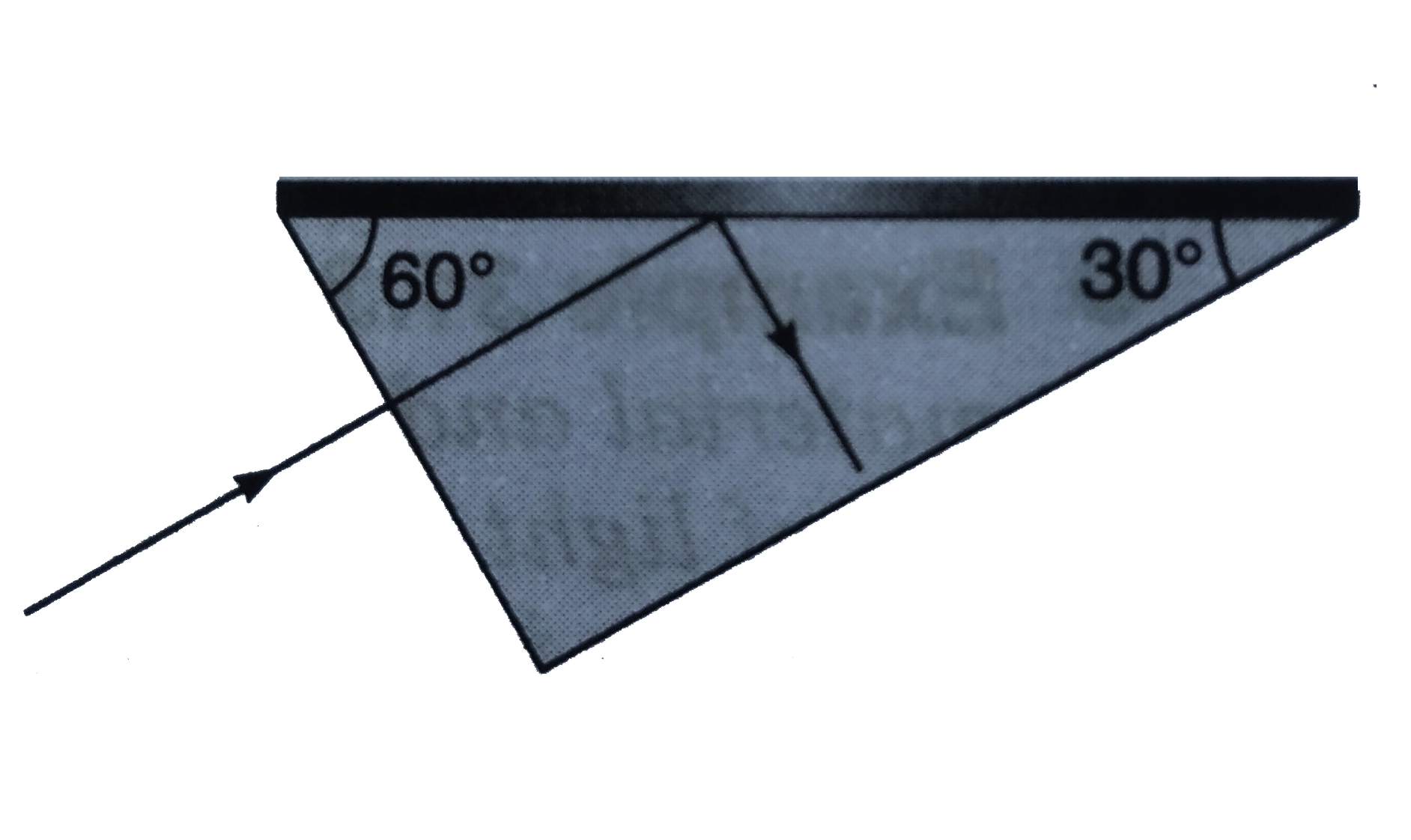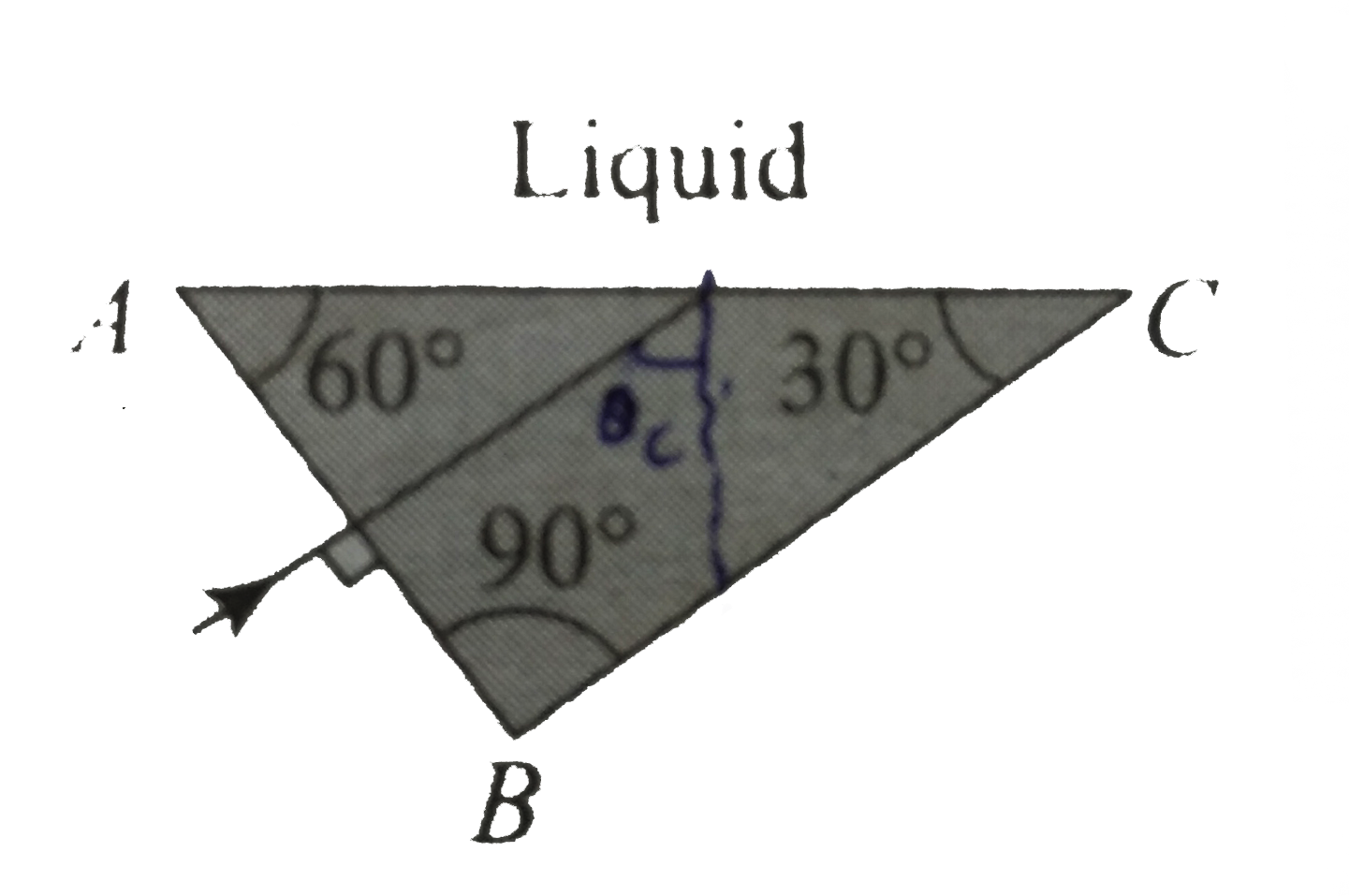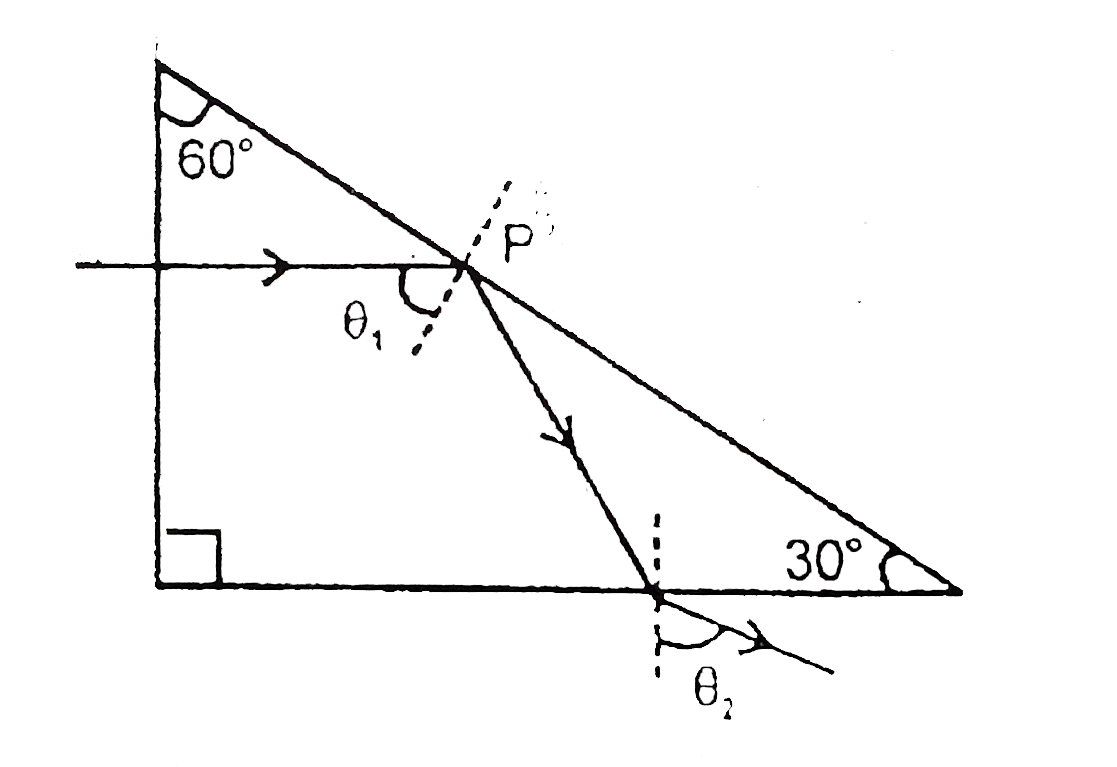Light is incident normally on the short face of a 30∘−60∘−90∘ prism. A liquid is poured on the hypotenuse of the prism. If the refractive index of the prism is √3, find the maximum refractive index of the liquid so that light is totally reflected.

The correct Answer is:1.299
Step by step video, text & image solution for Light is incident normally on the short face of a 30^@-60^@-90^@ prism. A liquid is poured on the hypotenuse of the prism. If the refractive index of the prism is sqrt(3), find the maximum refractive index of the liquid so that light is totally reflected. by Physics experts to help you in doubts & scoring excellent marks in Class 12 exams.
Topper's Solved these Questions
- BOOK - PHYSICS GALAXY - ASHISH ARORACHAPTER - GEOMETRICAL OPTICSEXERCISE - Advance MCQs with One or More Options Correct30videos
GEOMETRICAL OPTICS
- BOOK - PHYSICS GALAXY - ASHISH ARORACHAPTER - ELECTROSTATICSEXERCISE - Unsolved Numberical Problems73videos
ELECTROSTATICS
- BOOK - PHYSICS GALAXY - ASHISH ARORACHAPTER - HEAT AND THERMAL EXPANSIONEXERCISE - UNSOLVED NUMRICAL PROBLEMS FOR PREPARATION OF NSEP, INPhO & IPhO82videos
HEAT AND THERMAL EXPANSION
Similar Questions
A prism of refractive index √2 has refractive angle 60∘ . Find the angle of incidence so that a ray minimum deviation.
View SolutionLight is incident normally on face AB of a prism as shown in Figure. A liquid of refractive index μ is placed on face AC of the prism. The prism is made of glass of refractive indes 3/2 . Find the limits of μ for which total internal reflection takes place on the face AC.
 View Solution
View Solution
Knowledge Check
- Question 1 - Select One
A ray of light is incident on the hypotenuse of a right-angled prism after travelling parallel to the base inside the prism. If μ is the refractive index of the material of the prism, the maximum value of the base angle for which light is totally reflected from the hypotenuse is
Asin−1(Iμ)Btan−1(1μ)Csin−1(μ−1μ)Dcos−1(1μ) - Question 2 - Select One
A ray of light is incident normally on one face of a right-angled isosceles prism and then it grazes the hypotenuse. The refractive index of the material of the prism is
A1.33B1.414C1.5D1.732 - Question 3 - Select One
A ray of light is incident normally on one face of30∘−60∘−90∘prism of refractive index 5/3immersed in water of refractive index4/3as shown in figure.
 AThe exit angle θ2of the ray is sin−1(5/8)BTotal internal reflection at point Pceases if the refractive index of water is increased to 5/2√3by dissolving some substance.CTotal internal reflection at point P ceases if the refractive index of water is increased to 5/2√3 by dissolving some substance.DTotal internal reflection at point Pceases if the refractive index of water is increased to5/6by dissolving some substances.
AThe exit angle θ2of the ray is sin−1(5/8)BTotal internal reflection at point Pceases if the refractive index of water is increased to 5/2√3by dissolving some substance.CTotal internal reflection at point P ceases if the refractive index of water is increased to 5/2√3 by dissolving some substance.DTotal internal reflection at point Pceases if the refractive index of water is increased to5/6by dissolving some substances.
A ray of light is incident normally on one face of 30∘−60∘−90∘ prism of refractive index 5/3 immersed in water of refractive index 4/3 as shown in figure .
_E01_076_Q01.png) View Solution
View Solution
A ray of light incident on one of the face of a prism as shown. After refraction through this surface ray is incident on base of the prism. The refractive index of the prism is √3. The net deviation of the ray due to prism isView Solution
A ray of light is incident normally on one face of a prism as shown in figure. The refractive index of the material of the prism is 53 and the prism is immersed in water of refractive index 43, thenView SolutionA ray of monochromatic light is incident on the refracting face of a prism (angle 75∘0 . It passes through the prism and is incident on the other face at the critical angle. If the refractive index of the prism is √2 , then the angle of incidence on the first of the prism is
View SolutionA ray of light is incident at 60∘ on one face of a prism of angle 30∘ and the emergent ray makes 30∘ with the incident ray. The refractive index of the prism is
View Solution

